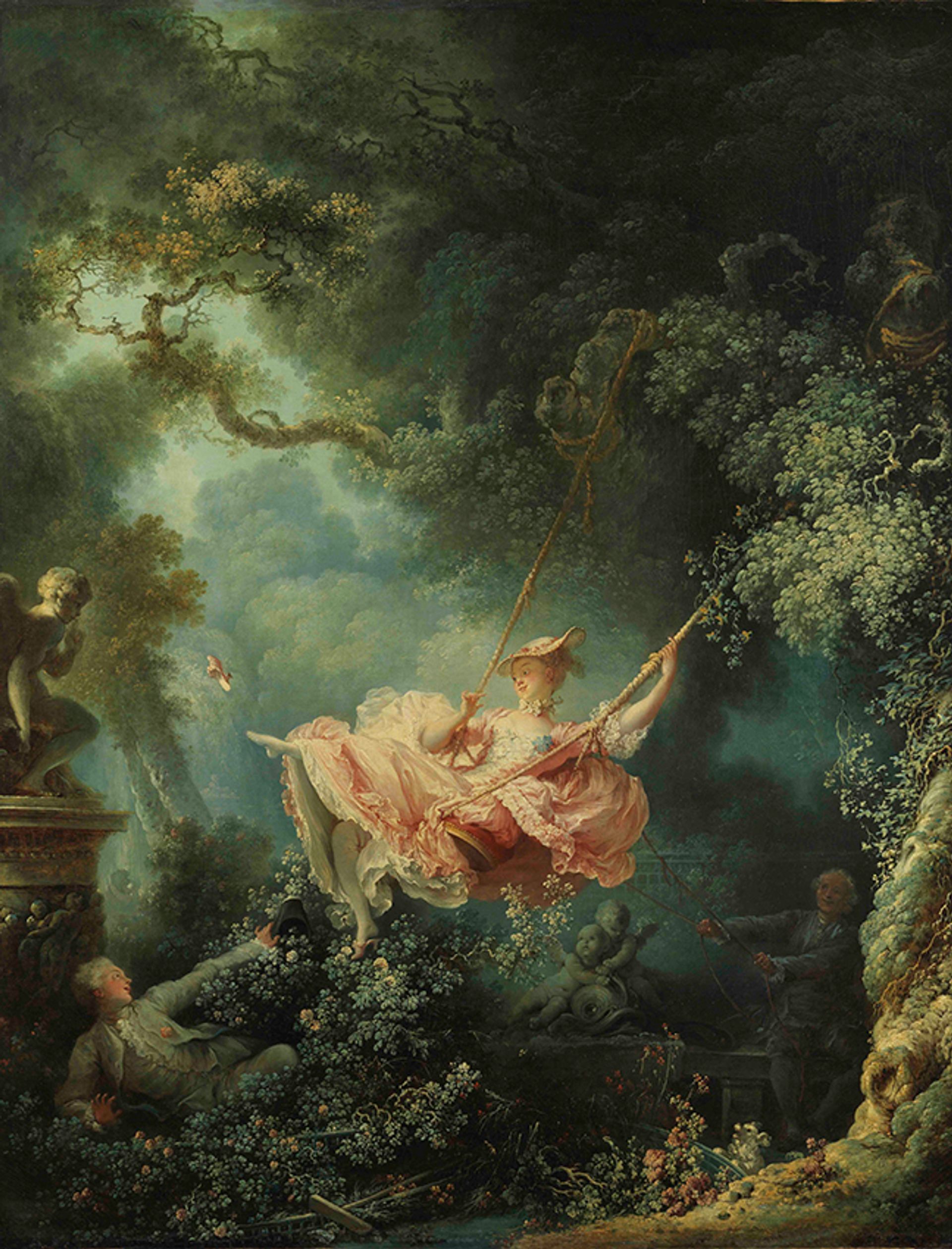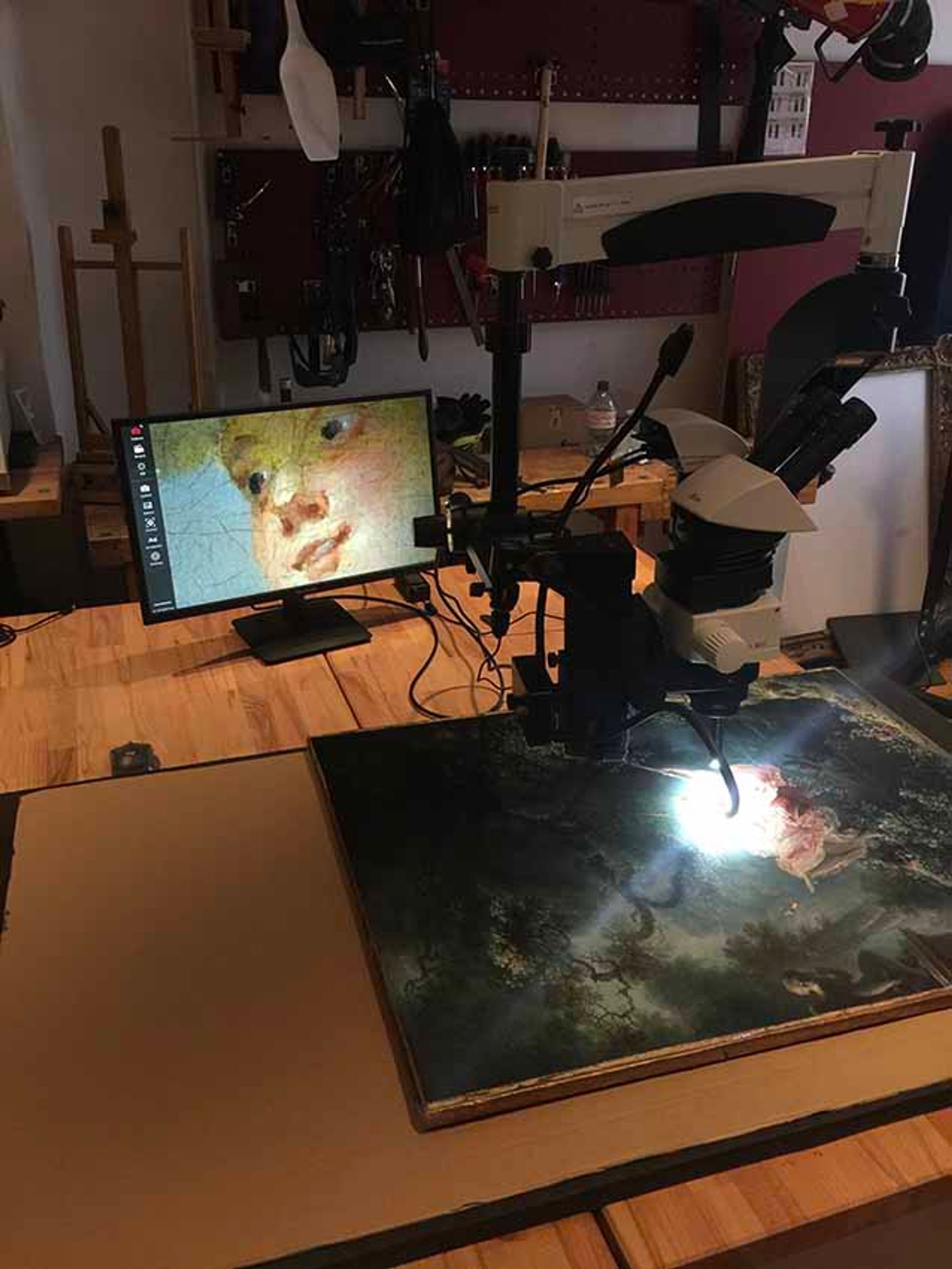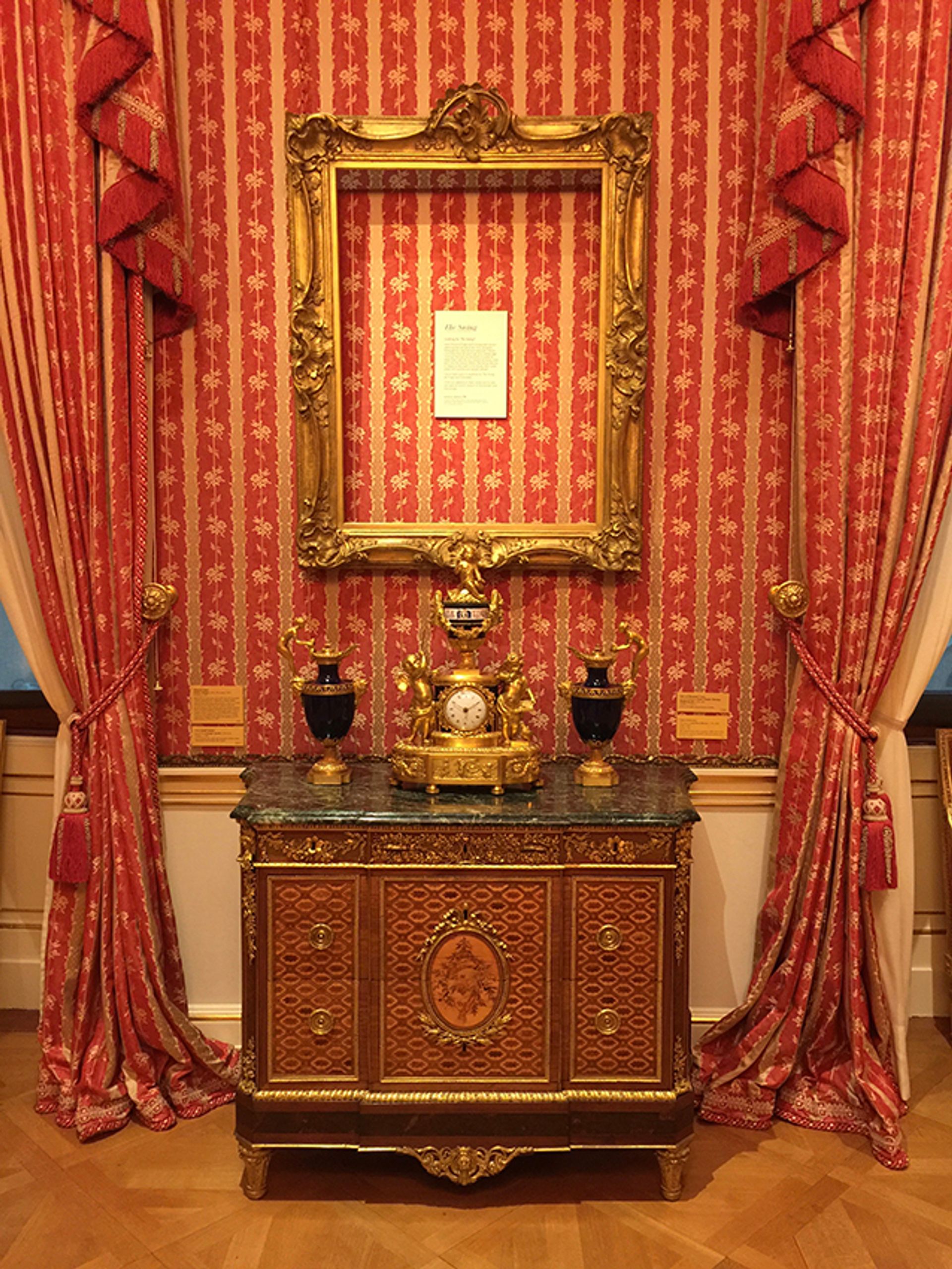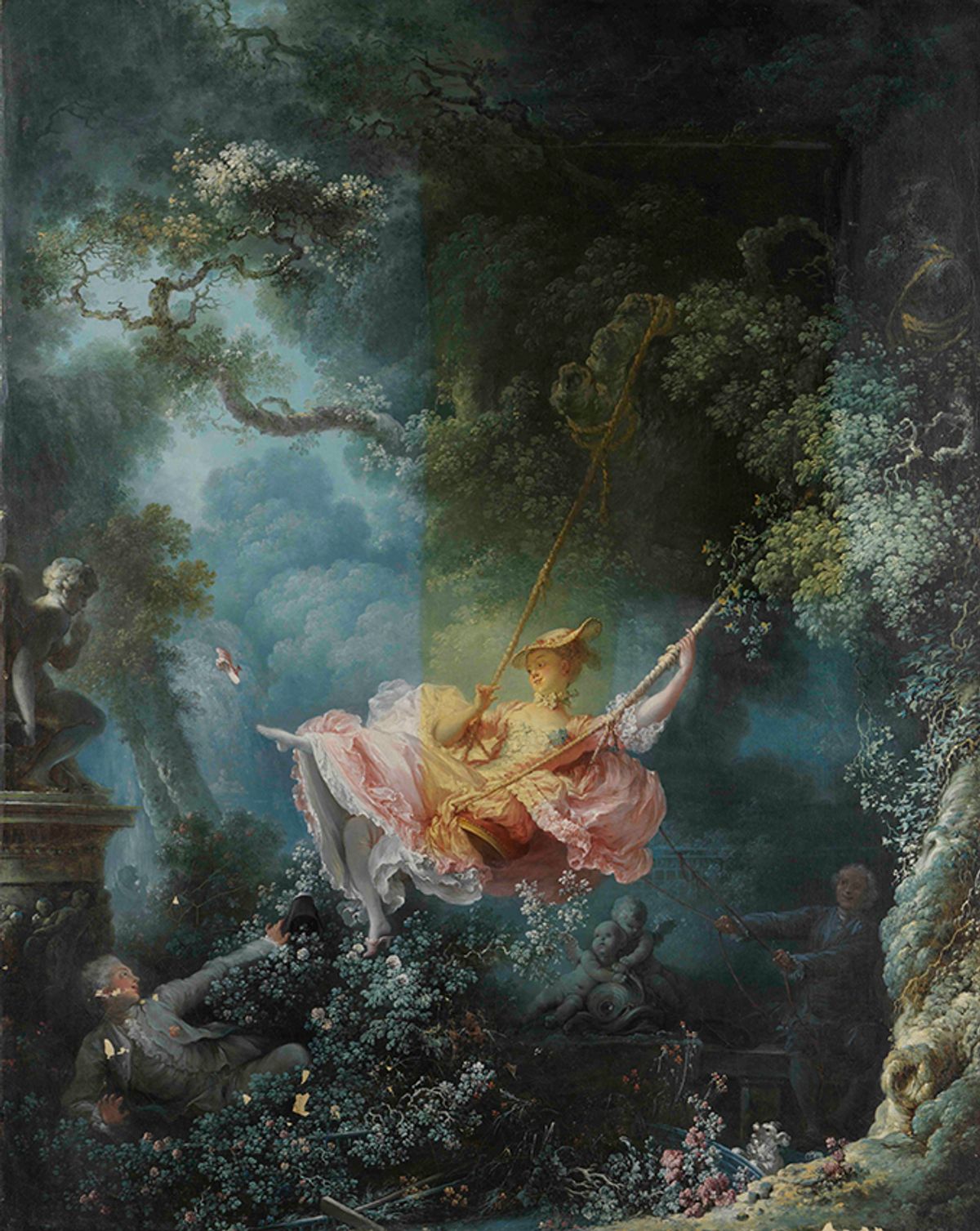Jean-Honoré Fragonard’s The Swing has become even more saucy and titillating. The Wallace Collection’s painting has been cleaned, removing darkened varnish, and the wide-eyed young woman now appears more mischievous—and more sensual.
Yuriko Jackall, the Wallace’s curatorial head and a specialist in French art, describesThe Swing as “the greatest painting of the Rococo movement”. Dating from about 1768, its mixture of eroticism and mystery has long captivated the public.
The conservator Martin Wyld is now completing the finishing touches, having removed yellowed varnish and earlier discoloured retouches. Details in the painting which had been obscured are now much clearer, providing the opportunity to reevaluate this intriguing work.

The yellow varnish on The Swing before the conservation © Wallace Collection, London
The pink of the young woman’s clothing and flesh now leaps out even more strongly. Set against the greenish-blue composition, she dynamically thrusts her way into the viewer’s space.
Almost hidden in the bushes are two men: a younger one on the left who is about to catch a tantalising glimpse of what lies beneath her silk dress and an older one on the right who propels the swing with a subtle allusion to the action of making love.
Frustratingly, the identity of the patron who commissioned The Swing has eluded art historians. Jackall, who is about to conduct archival research in France, hopes it may be possible to discover more. So far our only information comes from the memoirs of the dramatist Charles Collé, who discreetly noted in October 1767 that the original patron was “a gentleman of the court”.
Collé recounted that the artist Gabriel-François Doyen had met the patron “in his pleasure house with his mistress”. Originally offering Doyen the commission, the patron told him that “you will position me in such a way that I am able to see this pretty child’s legs”, with her “on a swing, pushed by a bishop”. Doyen, uneasy about taking on such an indecorous subject, suggested Fragonard—who readily agreed.

Microscopic view of The Swing, with detail of the young woman’s face © The Art Newspaper
Now that the painting has been conserved it is possible to read Fragonard’s details more clearly. The young woman’s bodice is richly embellished with lace and the swell of her bosom is now more pronounced. Her bottom rests on an elegant swing, made of gilded wood and upholstered with a rich red fabric—not what one might expect in a sylvan grove. Her facial expression has become strikingly lively and Jackall regards her as “more sensual”.
As the swing continues to rise, a shoe flies off. One suspects that this is no accident, and she has kicked it to land on the lap of her young suitor. Wide-eyed and enraptured, he is transfixed by her approach. With his left hand he offers her his hat, although his right hand suggests a frisson of fear.
But who is the older man on the right? The cleaning has confirmed that the figure is not dressed in black, like a bishop, but is a lay figure in blue. Jackall speculates that the scene may represent a “love triangle”, aptly echoed in the placing of the figures, with an elderly husband and young lover. Alternatively, they might be father and son, complicit in their infatuation.
With conservation virtually completed, the scene now appears more dynamic, with elements of danger appearing. The rope is fraying badly and it appears most precariously attached to the ancient tree.
The title of the painting was first recorded in a 1782 engraving: “Les hasards heureux de l’escarpolette” (The Happy Accidents of the Swing). But the word hasards may also hint at the perils of love.
The mysterious patron who commissioned Fragonard presumably hung the painting in the privacy of his bedroom or perhaps behind a curtain in a slightly more public room. The picture was later acquired by the tax collector Marie-François Ménage de Pressigny, who was guillotined in 1794 during the French Revolution.
The Swing was bought by the 4th Marquess of Hertford in 1865, five years before his death in Paris. It was inherited by his illegitimate son, Richard Wallace, and he and his wife hung the painting in their bedroom. Eventually Lady Wallace bequeathed the whole collection to the British nation. Today the Wallace Collection is housed in their mansion just off London’s Oxford Street.

The new home for The Swing: the empty frame awaiting the conserved painting, where it will go on view from 3 November © The Art Newspaper
Xavier Bray, the director of the Wallace Collection, says The Swing is their most well-loved picture—along with Hals’s Laughing Cavalier (1624, currently the centrepiece of an exhibition on the artist’s male portraits) and Poussin’s A Dance to the Music of Time (1634-36, now on loan to the National Gallery for its Poussin show).
Conservation work on The Swing was funded by Bank of America. On 3 November the risqué painting will go back on display in a new setting, hung between two windows lined with luxurious red curtains. Bray hopes that The Swing will eventually star in a Wallace exhibition on Fragonard (1732-1806), including the collection’s seven other works by the artist and outside loans—but that is some years away.


